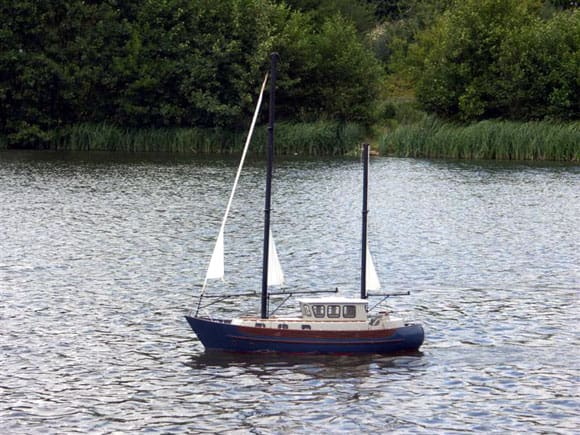
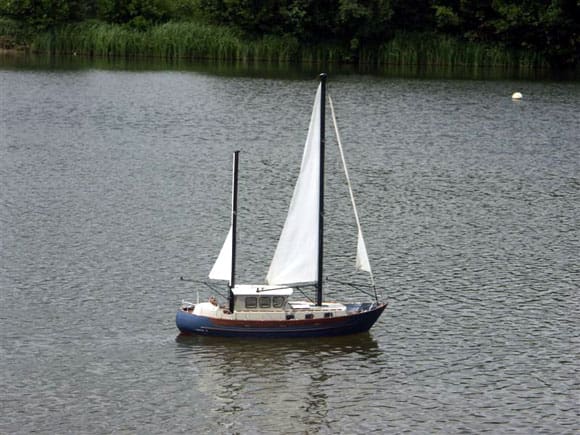
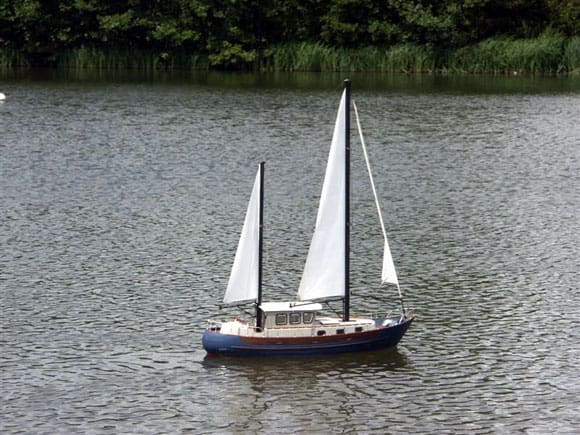
Pic: 1 The Fisher 46 sails away from the side of the lake with all sails furled. Pic: 2 The mainsail is deployed. Pic: 3 The main and mizzen sails are stretched out and the model is sailing well.
My friend Ralph Stockton has been making models since he was a very small boy. He builds all types of models from 1/3rd scale road transport and 7in gauge ‘ride on’ trains, to really super model boats. Recently Ralph completed another of his marine models, a Fisher 46 Motor Sailer at 1/12 scale. The Fisher is a large-scale sail/motor model, 46ins long and weighing over 30lbs. The masts and rigging are stored in especially made cases and are set up at the pondside for sailing on the water. The unique thing about this model is the sails are furled inside the masts and the headsail is roller reefed.
When the masts have been set up on the model before entering the water, it then takes two people to launch the model into the pond. Ralph is then able to move the model away from the bank using only the motor, which has a sound simulator that sounds just right and has been home made to Ralph’s own design, using just a simple trembler switch and a loudspeaker. There is even a smoke generator that puffs smoke out of the exhaust in time with the beat of the engine sound!
Enjoy more Model Boats Magazine reading in the monthly magazine.
Click here to subscribe & save.
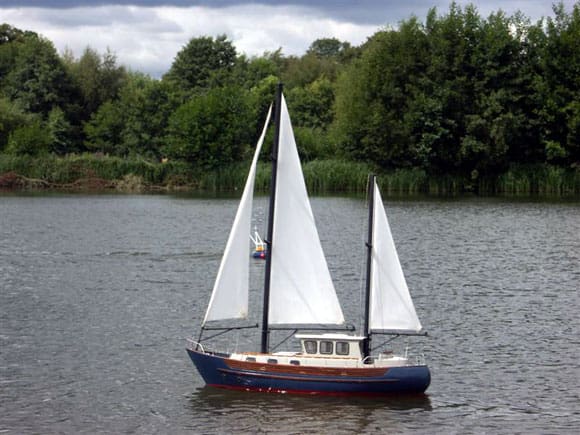
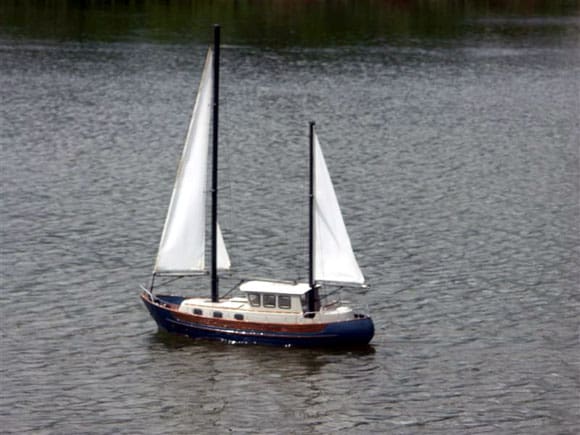
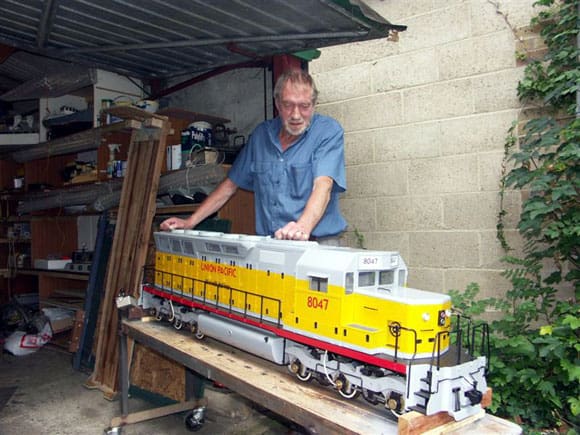
Pic: 4 Ralph’s Fisher 46 is enjoying an afternoon cruise. Pic: 5 The Fisher 46 has the main sail furled and still sailing well. Pic: 6 My friend Ralph Stockton at home with one of his electric ‘ride on’ trains.
Ralph uses seven channel radio control and he can deploy each sail in order from the transmitter and when they are set, the model will sail very well with the motor switched off. The model has one large Hitec drum winch that operates a long lever arm that pulls each of the different length sheets to each sail boom. Like the real craft this is not a fast sailing boat, but she does sail very well. If the wind is strong the model will sail just with the headsail and mizzen. You might think the model would be packed with sophisticated electronics, but that is not the case, as Ralph has used the basic Fleet r/c with standard servos and micro switches to set each sail both in and out. The sails are rolled up around a 3mm rod inside of the hollow GRP masts and are pulled out by a thin wire along the booms by a very small winch set into the base of each mast. The small winches have been made from standard servos with the control pots disconnected. These winches are reversed to retract the sails back into the masts. The sails are kept in the out position whilst in their storage boxes, so as to keep the cloth flat.
The model has been beautifully crafted and also looks good as a static model when on display, as all the mechanics are hidden below the decks, which can be accessed by removing the wheelhouse and cabin top.
The hull was built ‘plank on frame’ to the Model Boats plans. Ralph used 10mm ply for the frames and keel and 1.5mm birch faced ply strips for the planking. The hull was sealed with GRP resin and glass cloth inside, which made for a very light and strong hull. All the ballast lead weight has been moulded into the bottom of the hull. The model has been fitted with a bow thruster to make docking easier in a confined space.
I think the photos show how nice the model sails whilst on the water and indeed what an impressive model she is.




